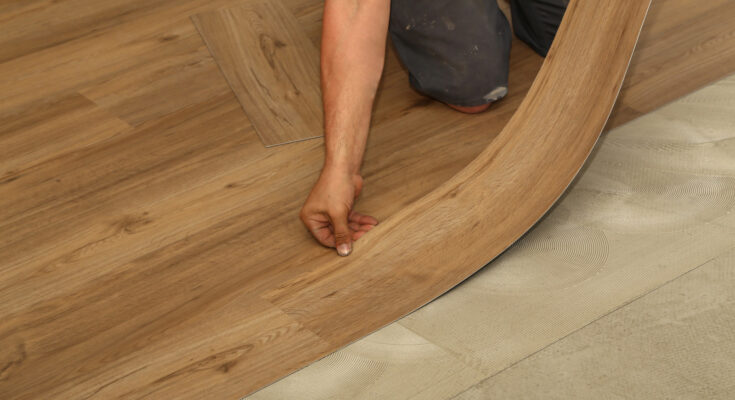What Is The Difference Between LVT And VCT Tile Flooring?
Flooring is an essential part of any room transformation. If you are currently going through the renovation process but can’t decide between LVT, VCT, or other vinyl flooring types, then we may be able to help you make a decision to establish which type of flooring is the right option for your space.
Even though LVT and VCT may initially appear similar, they have fundamental differences. LVT (luxury vinyl tile) is a structured engineered flooring material made up of four layers: The first is a resilient vinyl backing layer that acts as a strong foundation, followed by a vinyl core layer that makes sure the LVT is comfortable underfoot. Then comes a photographic print layer, which features the 3D imaging that mimics the appearance of natural materials. The final layer is what’s called a “wear layer” that protects the flooring from any wear and tear. This complex structure means that LVT is extremely durable and is perfect for busy areas within the home that will experience a lot of foot traffic.
What about VCT (vinyl composite tile)? Unlike LVT, VCT is constructed using a mixture of vinyl resins, mineral fibers, plasticizers and limestone. This makes the structural integrity of the floor both sturdy and flexible, meaning it’s a popular choice for high-traffic commercial areas such as schools and restaurants, as well as areas in the home that require durable flooring — think basements and garages.
The advantages and disadvantages of LVT
For residential properties, LVT is a great flooring option for your home if it falls within your budget. On average, it costs between $5 and $10 per square foot, but once that initial investment is made, the floor is very easy to maintain with regular sweeping and mopping. In fact, you can expect LVT to last up to 25 years. Due to the unique structure of LVT, it offers lots of different options to suit your desired flooring aesthetic, which includes the imitation of wood, stone or tile, meaning you are more than likely going to find a design to fit in with your interior style.
As far as downsides are concerned, LVT has been known to be susceptible to scratches and dents in extreme circumstances, which cannot be easily repaired due to the inability to sand down and refinish. It’s also good to be aware that if an LVT floor experiences any excessive water exposure, it can lead to lifting and distortion.
The pros and cons of VCT
VCT is an affordable flooring option and can cost as little as $2 per square foot. The lower price tag can be explained by its thinner and porous structure, meaning that it requires regular upkeep, which typically involves stripping and waxing once a year to keep it properly sealed and protected. This essential maintenance helps keep VCT incredibly durable and resistant to moisture, but it is something that should definitely be considered if you’re thinking about using it in your home.
Another thing to note is that it might be tricky to find a style of VCT that ticks all of your design boxes, as the choices are very limited. Eventually, if and when the time comes, and you decide you’d like to remove your VCT, it is notoriously difficult to do so because of the strong adhesive bond. One final note: If you’re making an effort to be eco-friendly with your flooring decisions, you might want to reconsider both VCT and LVT as they both contain PVC, which can be detrimental to the environment.



